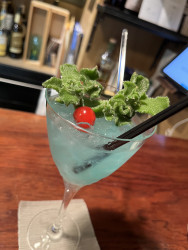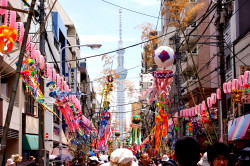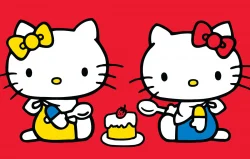
October 15, 2009
There’s Something About Yokai
Ancient Japanese monsters have a lot more relevance than you might think
By Metropolis
Originally published on metropolis.co.jp on October 2009
Ask foreigners of a certain age for the first image that pops into their mind when you say “Japan,” and you’ll inevitably hear “Godzilla.” For those of a younger generation, the answer is likely the decidedly more cuddly “Pocket Monsters.” And even more recently, the “J-Horror” film fad introduced a whole new host of creeps to foreign audiences.
Time to go to monster school, people. Because none of these creatures hold a candle to their direct ancestors, their progenitors, their great granddaddies: the yokai. They’re the scariest, freakiest, motliest (is that a word?) crew you’ve never heard of, and it’s high time they got their due.
First things first. Yokai are the creepy-crawlies that have been haunting Japan’s nightmares for as long as Japan’s been around—and undoubtedly quite a bit before. They really took off in Japan in the late 18th century, when an enterprising guy named Sekien Toriyama published the first in what would be a long-running series of tongue-in-cheek yokai guidebooks. Nearly every modern portrayal of the creatures is based at least in part on his two-and-a-half century old renderings, supposedly culled from actual historical sightings.
Whereas ghosts are a someone, yokai tend to be a something. The word covers a whole variety of weird stuff. Some are garden-variety monsters hungering for human chitlins. Others are “haunted” tools and objects. Still others are the faces behind odd physical sensations and natural phenomena. This vagueness makes it really, really difficult to transliterate “yokai” into English or any other language. So let’s not. Yokai are yokai.
In fact, you’re probably passingly familiar with more than a few of them already. Take the Kappa. Human-sized frog-men with tortoiseshell backs and a taste for human entrails. Or the Tengu, long-nosed, winged mountain men who are masters of the spear and sword. And who could forget the Tanuki, with their super-powered scrotums, and Kitsune, foxes with the ability to cloud men’s minds.
And these guys are the relatively normal ones out of the bunch. Dig a little deeper and the going gets weirder. Tsukumo-gami are sentient objects like umbrellas, lanterns, and sandals. Tofu Boy is just what his name implies: a yokai kid with a block of poison tofu on his plate. And there’s Rokuro Kubi, a species of seemingly human females with necks that stretch longer than an anaconda’s. The list goes on and on. There is, quite literally, a yokai for every occasion.

Illustration by Chip Boles
Killer tofu? Testicles of terror? Anaconda necks? Get that smirk off your face. This is no laughing matter. Because the funny thing is, the yokai never really left. In fact, you’ve been interacting with the suckers every single day—you just haven’t realized it. Hiding in plain sight is a yokai forte.
Consider the humble kappa maki. A favorite nori roll of sushi novices, it is so named because the cucumbers they contain are a favorite food of the yokai. Kirin beer? That’s no giraffe on the can, friend. Take a closer look next time you’re downing a tallboy. The dragon-like creature on the label is a yokai straight out of folklore. Tanuki soba? Noodles with empty bits of tempura batter, so named because selling leftover tempura chunkies feels like a tanuki prank.
And we haven’t even gotten to the idioms and turns of speech. Next time someone Japanese asks you how a job went, tell them it was he no kappa—“smooth as a kappa’s fart,” a piece of cake. And when your boss gets on your back, you can whisper to your co-workers that he or she’s tengu ni naru—become as egotistical as a Tengu. A rain shower on a sunny day? That’s kitsune no yome-iri—a fox bridal procession. Or when you encounter someone who’s surely feigning sleep, accusing them of tanuki ne-iri is the Japanese way to say they’re just playin’ possum. And don’t forget kitsune udon, the noodle dish filled with fried tofu, a fox favorite. See? The yokai are alive and well—they’re living in our grammar and our stomachs.
So there you have it. The yokai may be old, but they’re far from history. And they are tired of being ignored. They demand an equal opportunity for scaring the hell out of modern folk. Consider yourself warned.







